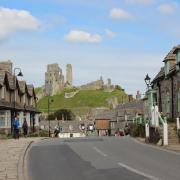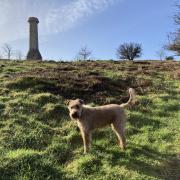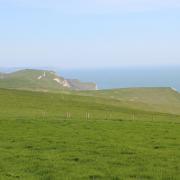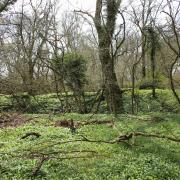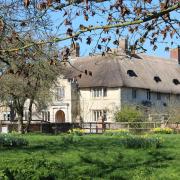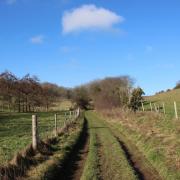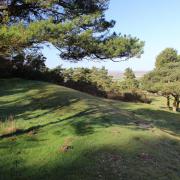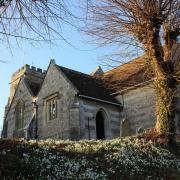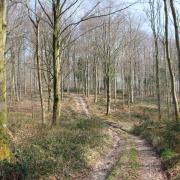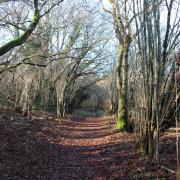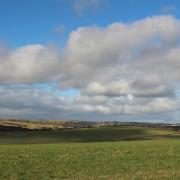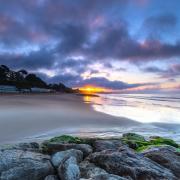This coastal walk takes you past archaeological sites where evidence of human occupation around 8,500 years ago has been discovered

Over the last million years, the Pleistocene Period, there have been at least 27 Ice Ages, the latest ending when the glaciers began to retreat about 10,000 years ago. Portland was in the periglacial zone on the periphery of the ice. Human occupation artefacts have been discovered on Portland dating back to the late-Palaeolithic (Early Stone Age). However, excavations by Portland's renowned archaeologist and Fellow of the Royal Anthropological Society, Susann Palmer, have revealed extensive remains of Mesolithic (Middle Stone Age) occupation, dating from about 8,500 years ago, at Culverwell habitation site and around the Old Lower Lighthouse. The glaciers were still melting at that time, so sea levels hadn't risen that much and the sea at Portland Bill was about 400 yards further out than it is today. Mesolithic tools have also been found around the present lighthouse and raised beach areas at about 55ft above sea level.
These and more sites are closely passed on this walk, but do spend some of your time just enjoying the stunning views.

The Walk
1 From the car park, leave near the top left corner Cross the M.O.D. rock-edged drive at the two-way Coast Path pointer. Through another rock line, follow the cut grass path slightly left over rising grassland, aiming for the west cliff edge. Notice the Old Lower Lighthouse, now Portland Bird Observatory, beyond Pulpit Inn down to your right. Reaching the cliffs, turn right, noticing Chesil Beach and Weymouth far ahead. Passing left of the Coastwatch Station, see the Old Higher Lighthouse on your right. Both lighthouses were originally built in the early-18th century but the lower was rebuilt in 1789. Both were rebuilt in 1869. In a few yards, join the wider track with fenced medieval strip fields right.

2 Past a right 'Footpath' marker stone, continue on the Coast Path alongside the security fence of Southwell Business Park, formerly Portland's Admiralty Underwater Weapons Establishment. After the Business Park, with Weston ahead, pass the instant-right 'Southwell Footpath'. Continue to the next right Coast Path stone and take the right fenced footpath-track passing a left barn on the way to Reap Lane, Southwell. Turn left. With a modern estate right, continue with left medieval fields. Mesolithic material was found here by Susann Palmer in the 1970s, and Mesolithic artefacts and a possible Neolithic post-framed structure in 1993.

3 Reaching the mini-roundabout, turn right into Avalanche Road with a variety of older cottages. After two left paddocks, take the left footpath-signed track opposite Number 65 to Coombefields Quarry edge (behind the hedge at the right bend). Continue between the hedge and right paddock to the end open area's facing low-stone wall. Go right along the enclosed footpath through bushes into St Andrew's Churchyard. Through, go down the steps into Church Lane and turn left. Continue past older cottages again to Southwell Street. Turn left, passing the Eight Kings at the mini-roundabout. Keep straight on, leaving Southwell at the 40mph signs. After the sweeping left bend, take the right signposted 'Coast Path' footpath-track, doubling back down to the gate.
4 Through, continue down the old quarry track, starting a long slow meander through and past several disused quarries which loaded their stone straight over the cliff edges to waiting ships. Many of the vertical quarry faces are popular for rock-climbing training and practice. In about ¼ mile, your track rises from a grassy plateau to a crossing track. Go left, down to the sea-cliffs and keep following the meandering quarry track, then down to concrete steam-engine blocks and up across another grassy plateau to a stone-crane, known as a whim. Skirting a sudden drop, go up to the grass path with right fenced paddocks. Below the strip lynchets on the other side of the road to your right, the long shelter covers Culverwell Mesolithic Site's stone floor and covered pits.
5 Follow the grass path over the footbridge and veer towards the sea again with Portland Bill and the other two lighthouses all in sight. The next right fenced-track will take you to Culverwell. Past a second whim above cavernous sea-caves, continue on the grass track to the first of the 'estate' of holiday huts. Continue along paddock fences. Keep straight on through the huts' site on track or grass. Pass a right track towards some white houses, and continue towards Portland Bill. Explore the stone 'levels' and raised beach as you go for fossil shells and, hopefully, Mesolithic artefacts. Past the mighty Portland Bill Lighthouse, continue to the Trinity House three-sided obelisk, south of which is Portland's furthest south point. Follow the rocky coast past Pulpit Rock, then double back to the car park where you started.
Read our ultimate walking guide for a sea of activities!




